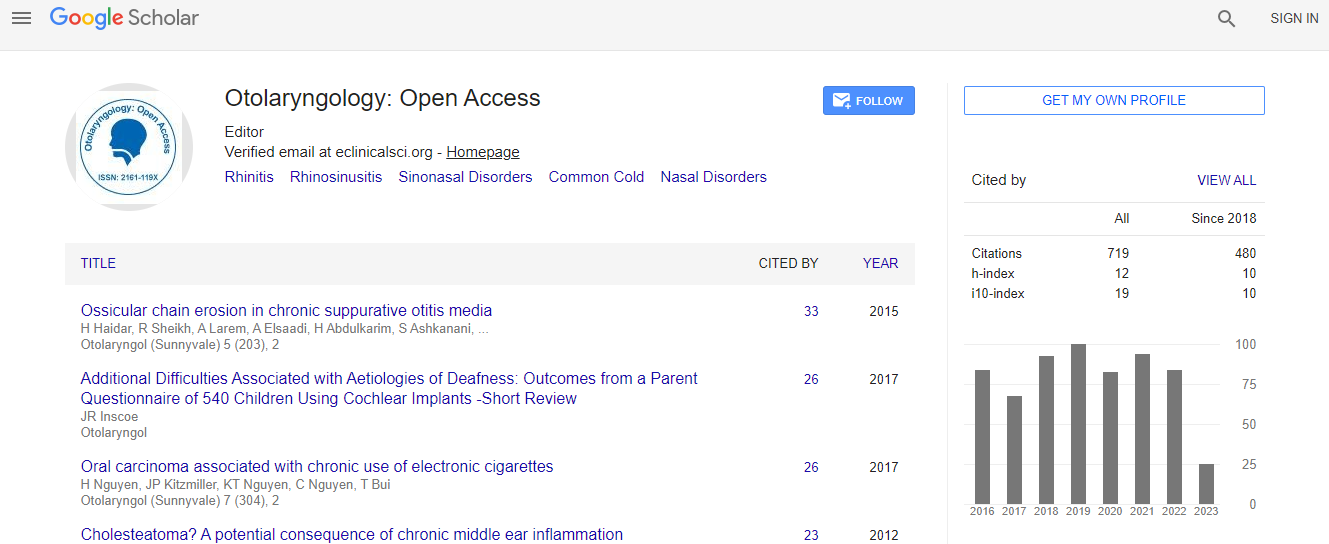Our Group organises 3000+ Global Events every year across USA, Europe & Asia with support from 1000 more scientific Societies and Publishes 700+ 51ºÚÁϳԹÏÍø Journals which contains over 50000 eminent personalities, reputed scientists as editorial board members.
51ºÚÁϳԹÏÍø Journals gaining more Readers and Citations
700 Journals and 15,000,000 Readers Each Journal is getting 25,000+ Readers
Citations : 925
Indexed In
- Index Copernicus
- Google Scholar
- Sherpa Romeo
- Open J Gate
- Genamics JournalSeek
- RefSeek
- Hamdard University
- EBSCO A-Z
- OCLC- WorldCat
- Publons
- Geneva Foundation for Medical Education and Research
- ICMJE
Useful Links
Recommended Journals
Related Subjects
Share This Page
Evaluation/Manifestation of LPR
International Conference on Aesthetic Medicine and ENT
Irfan Iqbal
HNS Government Medical College, India
ScientificTracks Abstracts: Otolaryngology
DOI:
Abstract
Background and purpose: To study the clinical presentation of Laryngopharyngeal Reflux (LPR), Document endoscopic findings of patients with (LPR) and its correalation with Gastroesophageal Reflux Disease (GERD), and to formulate management strategy. Methods: 112 patients were studied and followed for a period of at least six months. The study was under the following headings: (1) establish the diagnosis of LPR by using Reflux, (2) establish diagnosis of GERD, (3) treatment OF LPR Results: Majority of patients were females (53.3%) and in the age group of 20-50 years. RSI was used to study symptoms. Common symptoms were clearing of throat (97.1%), lump in throat (96.2%), excess throat mucus (93.3%). The signs of LPR were studied by using RFS. Common findings were vocal cord edema (97.1%) and erythema (93.3%). Symptoms of GERD were present in less than half of patients (47.6%). EGD found to be normal (64.8%). Most common finding on EGD was esophagitis (17.1%), gastritis (14.3%) and hiatus hernia (8.6%). Majority of patients responded to medical management (96.2%). RSI improved from a mean score of 17.6% at initiation of treatment to 3.9 at 6 months follow up. RFS improved from a mean score of 11.9 at pre-treatment to (1.7) at 6 months follow up. Conclusion: LPR is common and RFS and RSI were used to evaluate LPR, They were reproducible and effective. GERD was present in less than half of the patients. Medical management twice PPI was effective.Biography
Irfan Iqbal studied MBBS from reputed medical college in Srinagar, India. Later he joined for specialization of Otorhinolaryngology-Head and Neck Surgery and currently working as lecturer in HNS Government Medical College, India.
Email: irfaniqbal0809@yahoo.com

